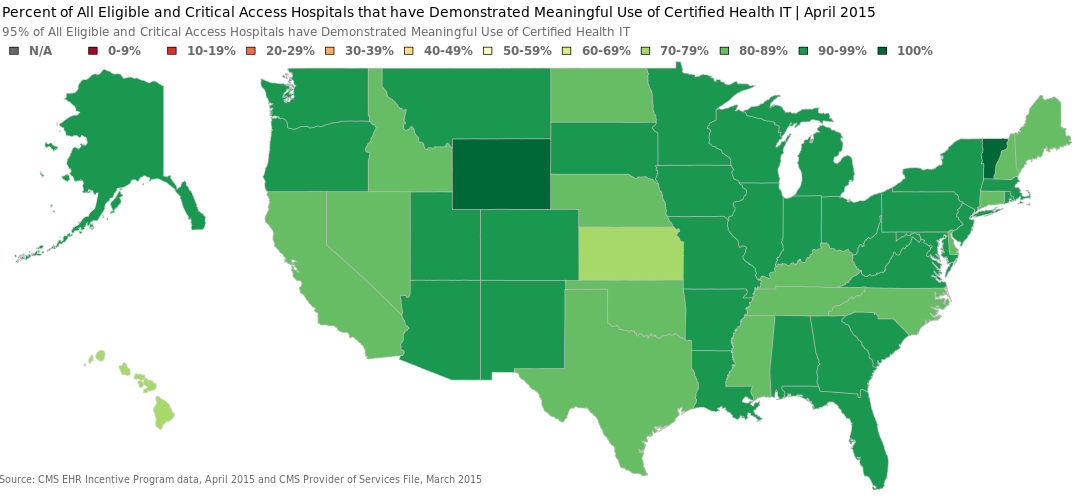HIT Boosts Population Health Data Analysis, Patient Outcomes
Health IT systems can bring a real advantage to population health initiatives across the country.

- When healthcare providers join together to form an Accountable Care Organization, a major goal of theirs is to improve the health of their given population. But what are some key areas where ACOs and payers could analyze population health data and improve patient outcomes?

The Journal of the American Medical Association (JAMA) explained in an article the vital role that electronic medical records and health information exchange plays in helping providers better track patients’ health and offer data that monitors quality of care. These technological innovations are now offering ACOs a way to better coordinate care, eliminate any gaps in quality, and aggregate population health data.
For example, ACOs along with public health officials could use the population health data available throughout hospitals and clinics to track the regions in which patients are more likely to be admitted for asthma issues. This could allow state or federal agencies to determine any environmental causes for asthma as well as ineffective primary care access for the patient community.
There is a vast amount of information that can be garnered from population health data such as falls among the elderly illustrate if they need more assistance, preventable readmissions for heart disease illustrate where to improve patient monitoring, and emergency room visits for diabetes show where community education programs would have the greatest influence.
Barriers of population health management
When it comes to boosting public health, there are some challenges that need to be overcome with regard to population health data analysis. These include the gap in information exchange between public health agencies and local clinics or hospitals.
Hospital executives, for instance, do not always focus on overall public health outcomes while agencies serving general public wellness often rely on education programs and community-based interventions, JAMA reports.
One potential solution to this problem is to provide greater incentive for hospitals and clinics to ensure their patient base is healthier. This is achieved among Accountable Care Organizations through quality measurement systems and the Shared Savings Program, which incentivizes better outcomes and greater care coordination.
A secondary issue that proves to be an obstacle for population health data management is the prioritization of healthcare organizations to use electronic medical records to improve clinical quality and other healthcare delivery essentials. This puts the aggregation and analysis of population health data on the back burner.
Putting more emphasis on public health outcomes is vital and can be achieved merely by connecting institutions to track patient readmissions and monitor care coordination among patients with a range of chronic medical conditions.
“The privacy framework for using health care data for public health purposes, particularly individual-level data, is underdeveloped,” the JAMA report mentioned another obstacle.
“The medical model is based upon the concept of consent for each clinical use of health information. Public health agencies are used to conducting surveillance without consent, such as for infectious disease reporting. A hybrid model that allows for community-wide assessment without individual consent and that also provides for the concept of consent for individual-level interventions would provide a path forward.”
“These barriers are worth addressing. Even if making population health data available, immediate, and actionable is a secondary benefit of the shift to electronic health records, it may prove to be a primary way to move the health of communities across the country forward.”
How health IT benefits population health initiatives
A report from Health Affairs finds that health IT tools are a vital aspect of tracking patient outcomes and improving general public health. New technologies can help both ACOs and public health agencies better share imperative information across their networks that could improve patient safety.
“Technology should enable researchers, practitioners, and public health officials to share data across networks, while protecting patients’ privacy,” according to the report. “There is great potential for health information technology (IT) to aid in achieving population health goals in the areas of clinical research, quality measurement, and public safety.”
Many more providers have been using electronic patient records around the nation due to the EHR Incentive Programs from the Centers for Medicare & Medicaid Services (CMS). The graph below illustrates the surge in electronic medical records use.
There are various reasons for the increased popularity of health IT tools such as electronic health records and e-prescribing software. This includes a need to curb rising medical costs, patient safety concerns, and potential gaps in healthcare quality.
One important point to remember is that these issues go hand-in-hand with population health management, which focuses on disease prevention and improving wellness. Thereby, health IT systems can bring a real advantage to population health initiatives across the country.
“With the advent of readily available electronic data from administrative and clinical information systems, public health departments have begun monitoring data streams as indicators of the health of their communities,” the Health Affairs report stated. “It has long been felt that nationwide real-time ‘bio-surveillance’ is a critical priority for preparing the United States to respond quickly to an emerging threat.”
Technologies and services within the population health management market is expected to rise from $14 billion in 2015 to $31.9 billion by 2020, according to one report. Predictive analytics and risk stratification software among others will continue to grow in popularity throughout hospitals and medical facilities.
Along with high software sales, it seems that professional services are also a major area of development in the population health management market. Initiatives to improve public health seem to have reduced the rates of Type 2 diabetes based on a report from the Center for Disease Control.
Through the use of health IT and improved exchange of medical data between public health agencies and providers, the nation could move toward stronger population health data analysis and better patient outcomes.

